| Hollywoodland | Aug 29 2022 |

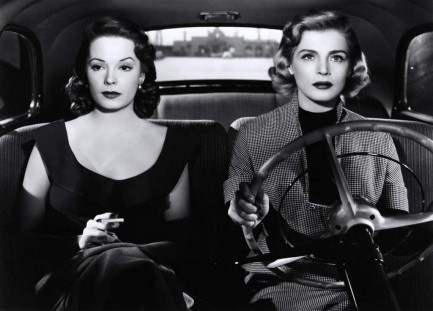
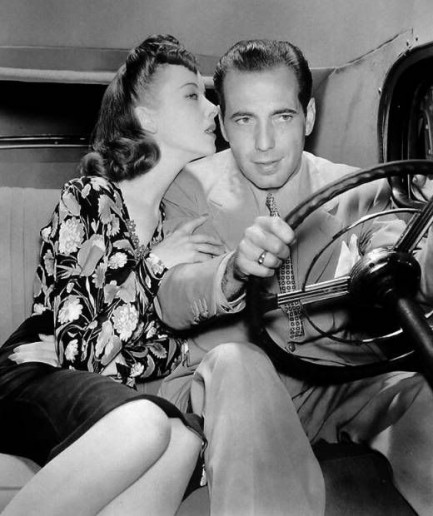 Humphrey Bogart tries to fake drive with Ida Lupino in his ear in 1941's High Sierra.
Humphrey Bogart tries to fake drive with Ida Lupino in his ear in 1941's High Sierra.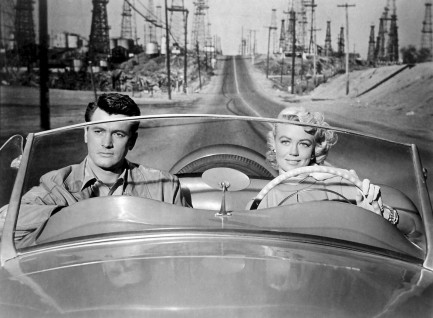 Dorothy Malone, Rock Hudson, and a rear projection of Long Beach, in 1956's Written on the Wind.
Dorothy Malone, Rock Hudson, and a rear projection of Long Beach, in 1956's Written on the Wind.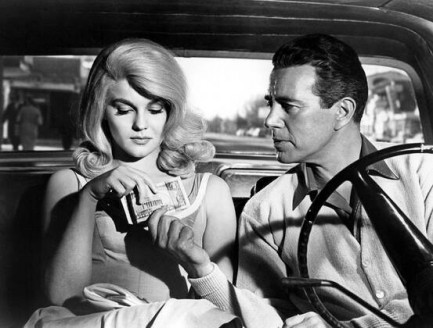 Ann-Margret and John Forsythe in Kitten with a Whip. We think they were parked at this point, but that's fine.
Ann-Margret and John Forsythe in Kitten with a Whip. We think they were parked at this point, but that's fine.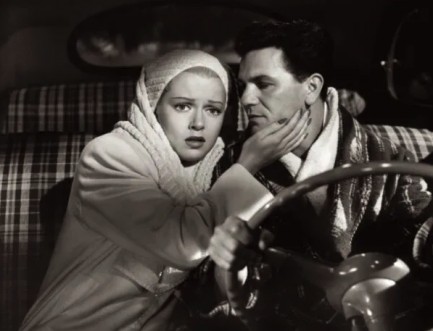
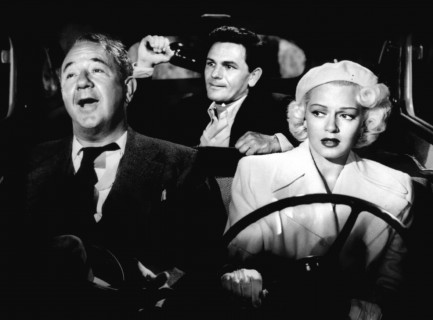 Two shots from 1946's The Postman Always Rings Twice with John Garfield and Lana Turner, followed by of shot of them with soon-to-be murdered Cecil Kellaway.
Two shots from 1946's The Postman Always Rings Twice with John Garfield and Lana Turner, followed by of shot of them with soon-to-be murdered Cecil Kellaway.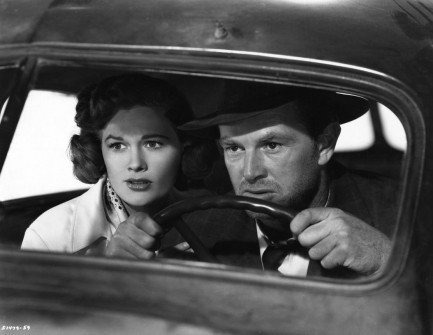
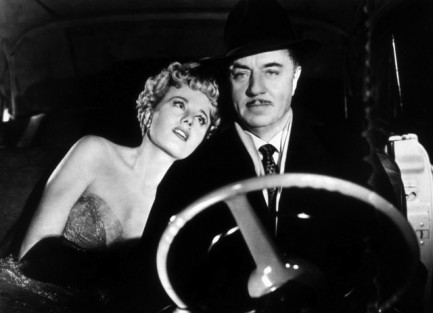 Shelley Winters, looking quite lovely here, fawns over dapper William Powell during a night drive in 1949's Take One False Step.
Shelley Winters, looking quite lovely here, fawns over dapper William Powell during a night drive in 1949's Take One False Step.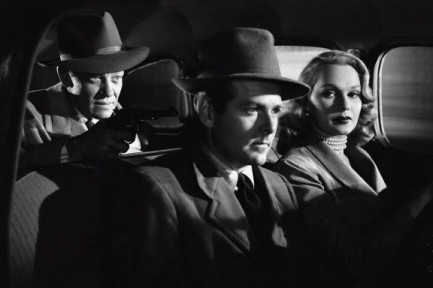 William Talman, James Flavin, and Adele Jergens share a tense ride in 1950's Armored Car Robbery.
William Talman, James Flavin, and Adele Jergens share a tense ride in 1950's Armored Car Robbery.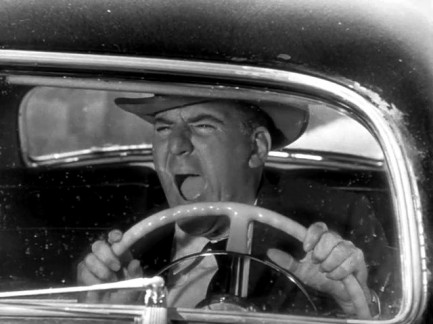 William Bendix rages in 1949's The Big Steal.
William Bendix rages in 1949's The Big Steal.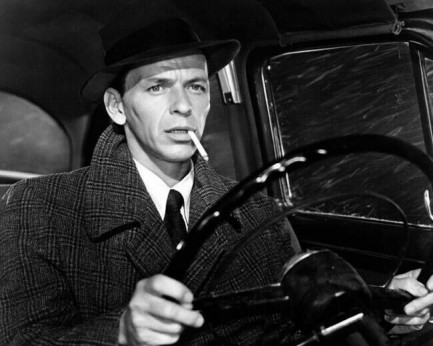 Frank Sinatra drives contemplatively in Young at Heart, from 1954.
Frank Sinatra drives contemplatively in Young at Heart, from 1954.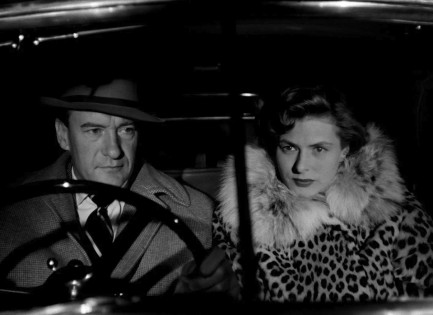
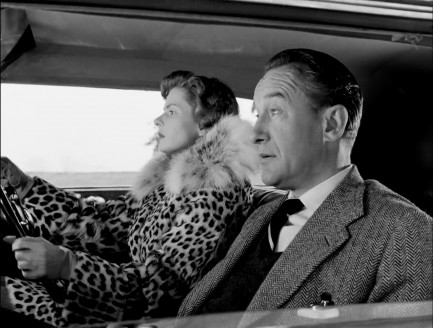 George Sanders drives Ingrid Bergman through Italy, and she returns the favor, in 1954's Viaggio in Italia.
George Sanders drives Ingrid Bergman through Italy, and she returns the favor, in 1954's Viaggio in Italia.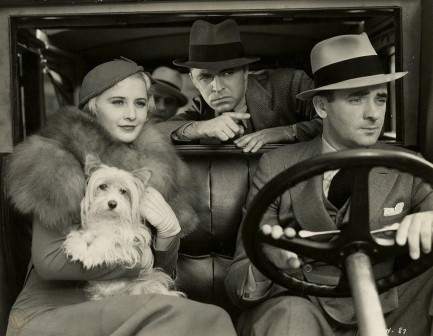 Harold Huber, Lyle Talbot, Barbara Stanwyck and her little dog too, from 1933's Ladies They Talk About.
Harold Huber, Lyle Talbot, Barbara Stanwyck and her little dog too, from 1933's Ladies They Talk About.
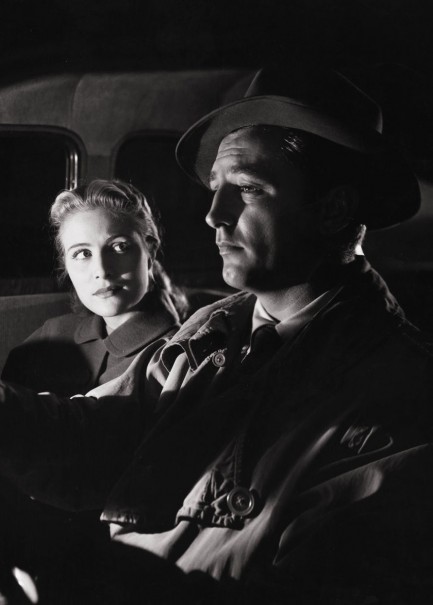 Virginia Huston tells Robert Mitchum his profile should be cast in bronze in 1947's Out of the Past.
Virginia Huston tells Robert Mitchum his profile should be cast in bronze in 1947's Out of the Past.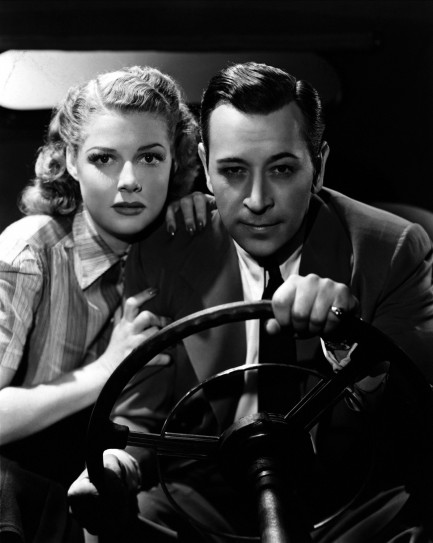 Ann Sheridan hangs onto to an intense George Raft in 1940's They Drive by Night.
Ann Sheridan hangs onto to an intense George Raft in 1940's They Drive by Night.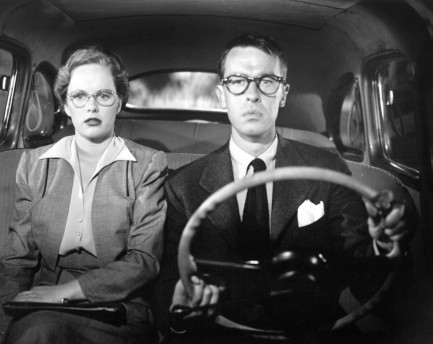 Peggy Cummins and John Dall suddenly realize they're wearing each other's glasses in 1950's Gun Crazy, a film that famously featured a real driving sequence, though not the one above.
Peggy Cummins and John Dall suddenly realize they're wearing each other's glasses in 1950's Gun Crazy, a film that famously featured a real driving sequence, though not the one above. John Ireland and Mercedes McCambridge in 1951's The Scarf.
John Ireland and Mercedes McCambridge in 1951's The Scarf.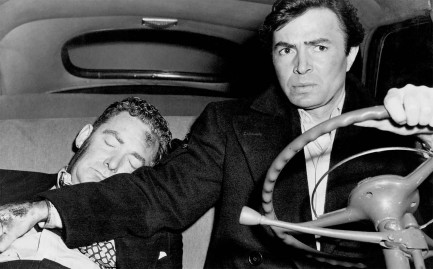 James Mason drives an unconscious Henry O'Neill in 1949's The Reckless Moment. Hopefully they're headed to an emergency room.
James Mason drives an unconscious Henry O'Neill in 1949's The Reckless Moment. Hopefully they're headed to an emergency room.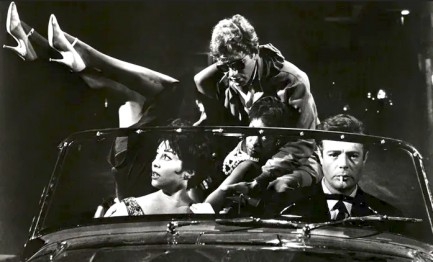 Marcello Mastroianni driving Walter Santesso, Mary Janes, and an unknown in 1960's La dolce vita.
Marcello Mastroianni driving Walter Santesso, Mary Janes, and an unknown in 1960's La dolce vita.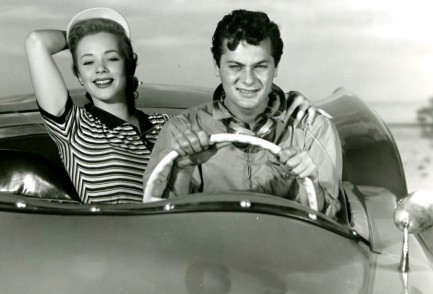 Tony Curtis thrills Piper Laurie with his convertible in 1954's Johnny Dark.
Tony Curtis thrills Piper Laurie with his convertible in 1954's Johnny Dark.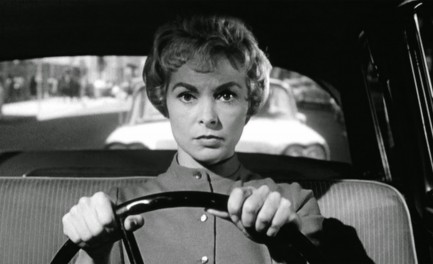 Janet Leigh drives distracted by worries, with no idea she should be thinking less about traffic and cops than cross-dressing psychos in 1960's Psycho.
Janet Leigh drives distracted by worries, with no idea she should be thinking less about traffic and cops than cross-dressing psychos in 1960's Psycho.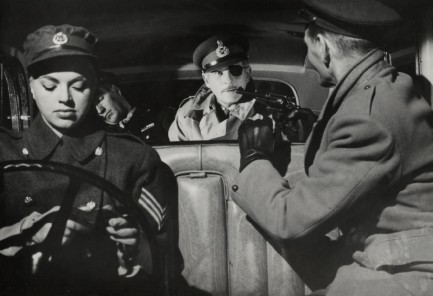 We're not sure who the passengers are in this one (the shot is from 1960's On the Double, and deals with Danny Kaye impersonating Wilfrid Hyde-White) but the driver is Diana Dors.
We're not sure who the passengers are in this one (the shot is from 1960's On the Double, and deals with Danny Kaye impersonating Wilfrid Hyde-White) but the driver is Diana Dors.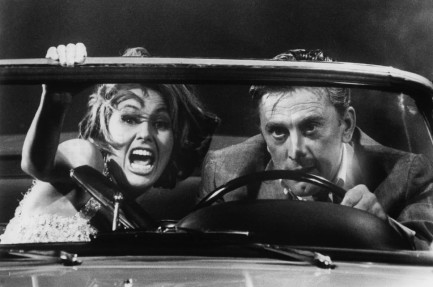 Kirk Douglas scares the bejesus out of Raquel Welch in 1962's Two Weeks in Another Town. We're familiar with her reaction, which is why we're glad the Pulp Intl. girlfriends don't need to drive here in Europe.
Kirk Douglas scares the bejesus out of Raquel Welch in 1962's Two Weeks in Another Town. We're familiar with her reaction, which is why we're glad the Pulp Intl. girlfriends don't need to drive here in Europe.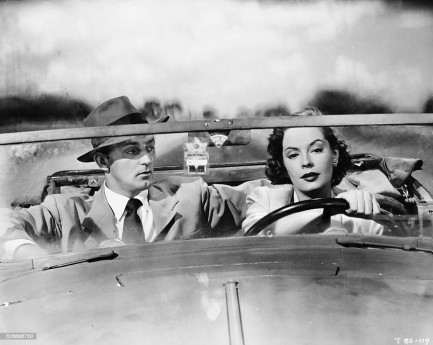 Robert Mitchum again, this time in the passenger seat, with Jane Greer driving (and William Bendix tailing them—already seen in panel ten), in 1949's The Big Steal. The film is notable for its many real driving scenes.
Robert Mitchum again, this time in the passenger seat, with Jane Greer driving (and William Bendix tailing them—already seen in panel ten), in 1949's The Big Steal. The film is notable for its many real driving scenes. James Mason keeps cool as Jack Elam threatens him as Märta Torén watches from the passenger seat in 1950's One Way Street.
James Mason keeps cool as Jack Elam threatens him as Märta Torén watches from the passenger seat in 1950's One Way Street.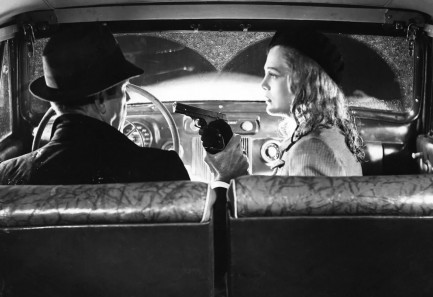 And finally, to take a new perspective on the subject, here's Bogart and Lizabeth Scott in 1947's Dead Reckoning.
And finally, to take a new perspective on the subject, here's Bogart and Lizabeth Scott in 1947's Dead Reckoning.| Vintage Pulp | Nov 4 2019 |

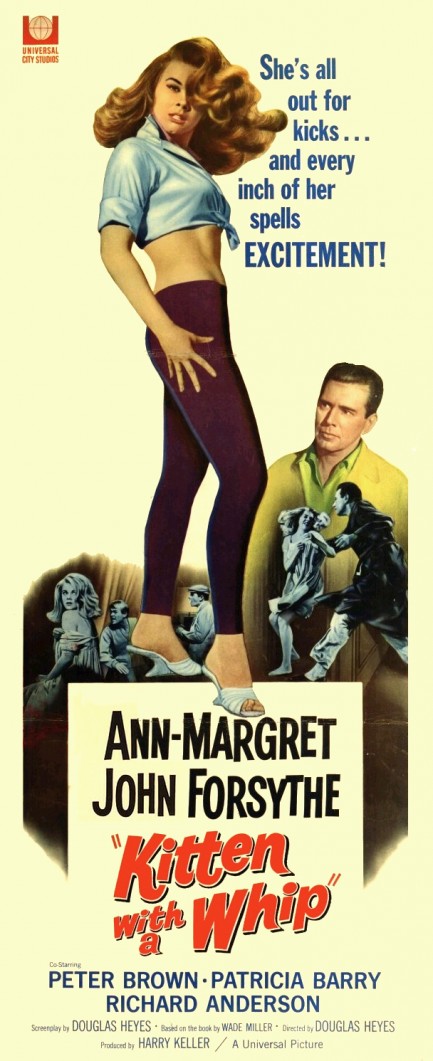
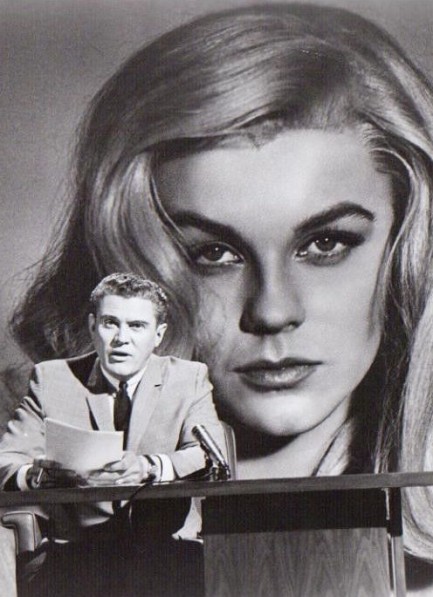
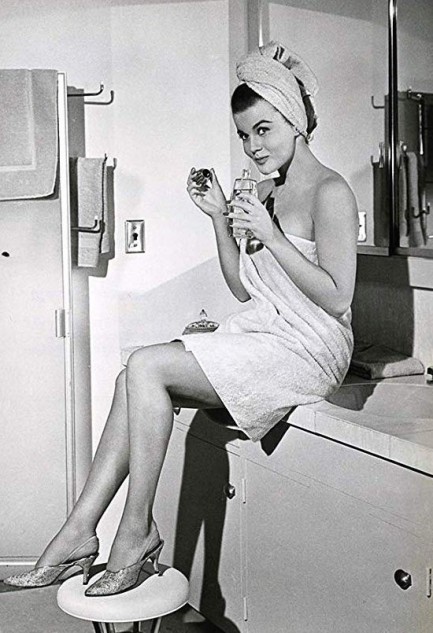
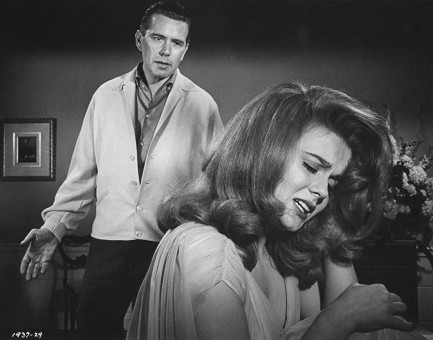
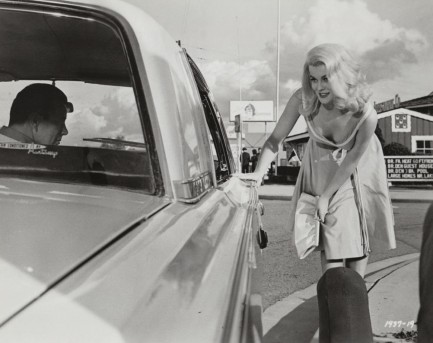

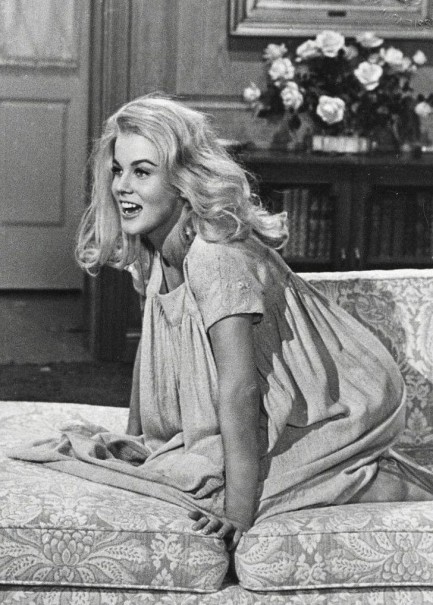
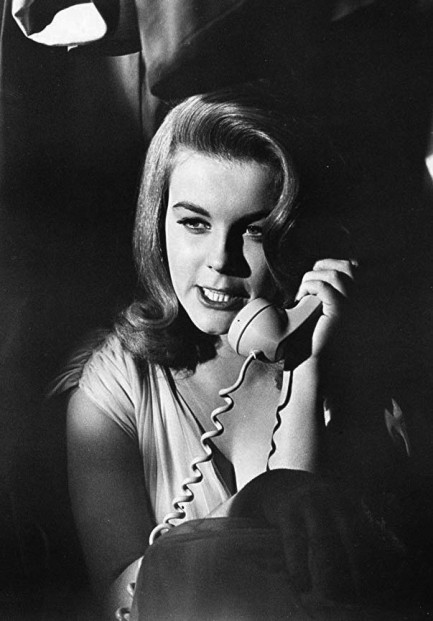
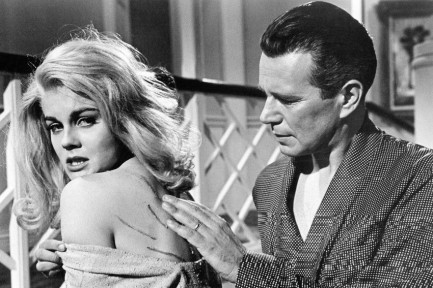
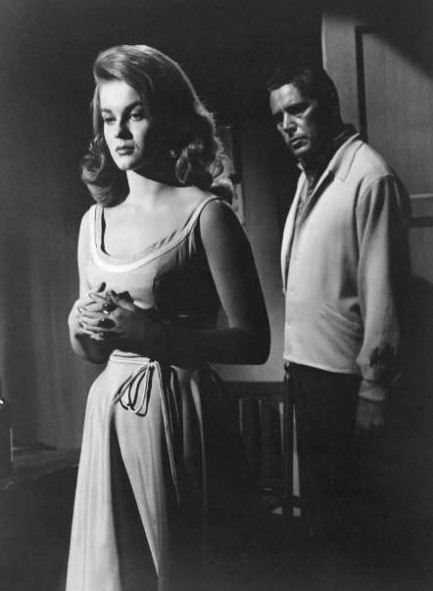
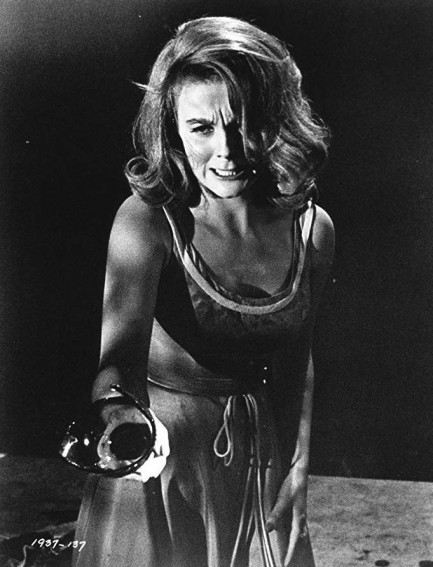
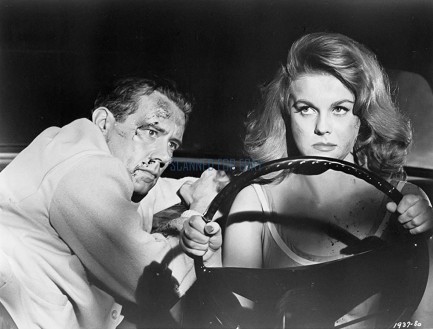
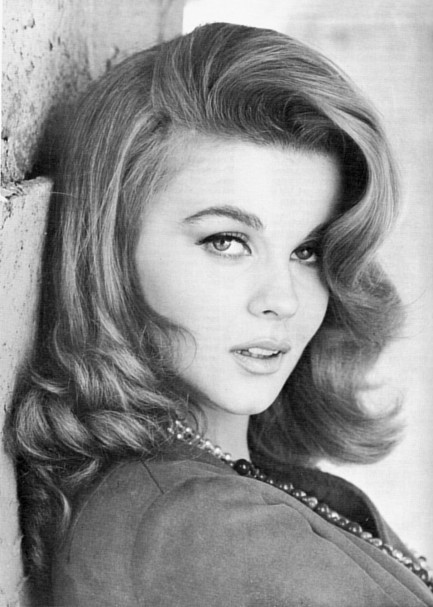
| Vintage Pulp | Apr 11 2018 |

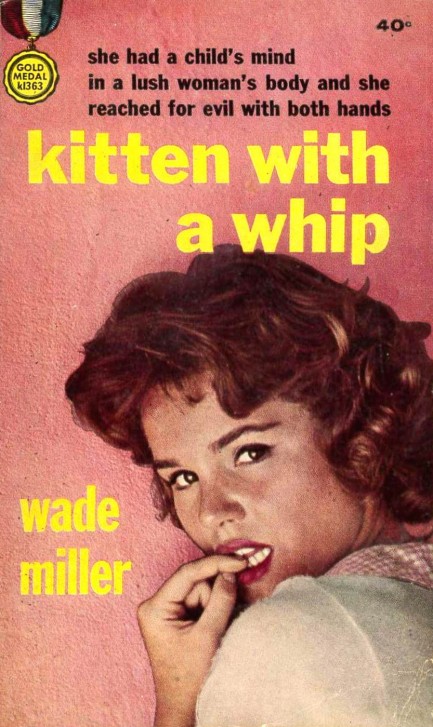
This edition of Wade Miller's iconic sleazer teaser Kitten with a Whip is a rarity and it came from Gold Medal in 1963. There's a moment early in the narrative when the hapless protagonist David turns on a news report about the seventeen-year-old sexpot invader occupying his home. Up until then the girl, whose name is Jody, has been in David's house tormenting him only a few hours, but is threatening to ruin his life with lies that they've been shacked up having a grand old time, or that he tried to rape her. David is paralyzed with fear that his wife, neighbors, and employer will believe her. But in that moment when the entire city is told the girl is a violent psycho who escaped her confinement a mere twelve hours earlier by stabbing a matron, David doesn't realize nobody will believe anything she says—not his employers, not his neighbors, and certainly not his wife—as long as he turns her in then and there. “I woke up, found her in my house, bought her some clothes because she had none, gave her money for a bus out of town—and instead of leaving she decided to stay and blackmail me.” He'd be believed, beyond a doubt. But he never makes the call. So he really deserves everything that happens afterward. But the book is a classic for a reason. It's a fun, crazy read.
| Vintage Pulp | May 22 2009 |

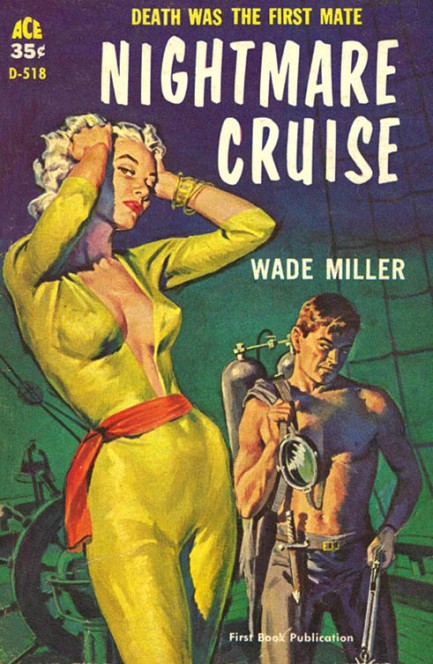
Nightmare Cruise, aka The Sargasso People, was written by Wade Miller, who was not an actual author, but rather a pseudonym for collaborators Robert Wade and Bill Miller. The two also wrote as Will Daemer, Whit Masterson and Dale Wilmer. During the ’40s and ’50s they published about three-dozen novels, including Kitten with a Whip, which became a celebrated piece of camp cinema starring Ann-Margaret. They also wrote Badge of Evil, which was adapted into Orson Welles’ Touch of Evil, a film usually considered the last true noir produced. Miller died prematurely of a heart attack in 1961, but by then the duo’s place in pulp history was assured. Wade continued writing, eventually winning the Private Eye Writers of America’s 1988 Lifetime Achievement Award, and 1998 City of San Diego Local Author Achievement Award. We’ll discuss his noteworthy solo output at a later date.




































































